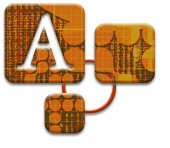| |
 Topic
A3.1: Instructional Design Topic
A3.1: Instructional Design
The ADDIE Model
Instructional Systems Design (ISD) is a process
of applying models, templates, and other tools for crafting instruction,
with the goal of designing quality programs and products.
Most models used today have some
common elements, but they may differ in the sequence of when the processes
or steps are performed. A generic model of instructional design that’s
effective for the online environment is the “ADDIE” model:
Analysis, Design, Development, Implementation, and Evaluation.
Analysis: In
the first phase of instructional design, you need to identify and understand
who, what, where, when, and by whom your design is to be used. You
might review the available resources (for content and with help in
running the course, libraries, student support services, etc.), examine
the course delivery tools (multimedia, Internet, satellite, etc.),
and study your target audience (as covered in Topic
2.3).
Careful analysis allows for an
overview of the project before you write the content. This macroscopic
view should also include an assessment of any prerequisite or co-requisite
knowledge or skills required. Because it sets the tone for the entire
project, the analysis stage is probably the most important part of
the ISD process. Perhaps because of its importance, it’s imperative
to avoid GIGO-- “garbage-in-garbage-out,” a common warning
motto in ISD. By analyzing thoroughly and thoughtfully, you can avoid
any extraneous material from entering the web course. Table 3B.1 on
the next page is an 'Audience Analysis Summary Worksheet' to use to
summarize the results of the audience analysis.
 
TOP
|